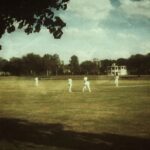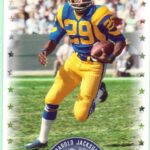Remembering the 1914 “Miracle Braves”
(Editor’s Note: This story was originally printed on Boston Sports Then and Now)
The “Miracle Braves” of 1914 shocked the baseball world and made history when they won the franchise’s only World Series title in Boston.
The Atlanta Braves come back to their roots this weekend, as they come to their original home in Boston for a weekend series in Fenway Park with the Red Sox as interleague play continues. It’s been a long time since the Braves graced the sports world of the Hub, having relocated first to Milwaukee in 1953 and then to Atlanta in 1965. The fact the franchise left a baseball-crazed town tells you they never rose above playing second fiddle to the Red Sox. But in one glorious year the Braves gave the city a season to remember, one that still lives in on baseball lore for its miraculous turnaround and shocking World Series upset. With the franchise back visiting this weekend, BST&N looks back on 1914 and the year that belonged to Boston’s “Miracle Braves.”
Boston’s NL team was managed by George Stallings, on his third team in six years and looking for his first pennant. It was Stallings’ second year in Boston and his best player was second baseman Johnny Evers, closely followed by outfielder Joe Connelly. The latter led the team in most key offensive categories, while the former had such an exquisite balance of offensive and defensive prowess, that he won the American League MVP in the award’s fourth year of existence. The pitching staff was top-heavy, as most were in those days. Three pitchers—Dick Rudolph, Bill James and Lefty Tyler—combined to make 107 of the team’s 154 starts, and averaged over 310 innings apiece.
This talent alone wasn’t enough to make Boston a contender coming out of the gate though, and after the season started in mid-April, the Braves promptly lost 18 of their first 22. On June 8, they had fallen 13.5 games back of the pace being set by the New York Giants and the Cincinnati Reds. Lest you think the turnaround was imminent, the Fourth of July saw the Braves get swept in a doubleheader by the Brooklyn Dodgers, leaving them at 26-40, a good fifteen games back of the Giants and firmly buried in the cellar, with five games separating them from even reaching seventh in the eight-team National League.
It was the offense and winning close games that would key the dramatic turnaround about to start. The Braves would finish second in the National League in runs scored, while the pitching was in the middle of the league. They were third in home runs—back in this era, 62 led the league, so no one was making a living going deep. The Braves, showing they were firmly in line with what would become Boston sports tradition, were slow as molasses—at least relative to the competition. They stole 139 bases, last in the NL. This speed-oriented era saw 239 steals lead the league. There’s nothing in the overall statistical numbers that suggest a pennant-winning team, but one number does stand out. It’s the 33-20 record the Braves posted in one-run games, something that would ultimately give them a huge advantage over the Giants, who languished at 18-25.
Fate was not only smiling on the Braves, but by August, Fenway Park would be too. The old South End Grounds, the team’s regular home had been torn down and it wouldn’t be until the start of the 1915 season that Braves Field would be set to open. So at a time when Boston was closing the gap—they got the margin to nine games by the end of July and moved up to fourth place, and then swept three from the Giants in the Polo Grounds on August 13-15 to move within 3.5—they’d also be sharing space with their American League counterpart, who’d won the World Series just two years prior.
Two weeks later, the Braves won a game at Wrigley Field against the fading Cubs and pulled even in the race for first place. On Labor Day—a holiday in its third year, just like Fenway Park—Boston split a doubleheader with New York, then won the rubber match the following day and moved into sole possession of first place. They never looked back, with the lead ascending over the month and hitting an astonishing 11.5 games before finally settling at 10.5. Boston had finished the season on a 68-19 tear after the Fourth of July.
The opponent in the World Series would be the Philadelphia A’s. You didn’t have to look deep into their statistical profile to find out how they won games, or look for some key turning point of the season. The A’s racked up 749 runs, obliterating the rest of the AL in offense. While the Red Sox had a good year, finishing second, Connie Mack’s A’s had control of the American League by May and it was no contest on their way to 99 wins. They had their own MVP in Eddie Collins along with left fielder Frank “Home Run” Baker, whose nine homers got him the nickname.
 Unheralded catcher Hank Gowdy was a World Series hero–and later the first American baseball player to go to war in Europe.
Unheralded catcher Hank Gowdy was a World Series hero–and later the first American baseball player to go to war in Europe.
Dick Rudolph took the ball for the Series opener at Shibe Park and outdueled Philadelphia ace Chief Bender decisively. Catcher Hank Gowdy hit a single, double and triple and a three-run sixth helped the Braves break open a 3-1 game and turn it into a 7-1 finale. One day later, on a Saturday afternoon James tossed a two-hitter, but it was scoreless in the top of the ninth. Left fielder Charlie Deal hit a fly ball that was lost in the sun for a double, and he eventually scored on a two-out single by Les Mann. Boston was coming home in surprising control of the Series.
We should note in fairness here that the kinds of rumors that nearly destroyed baseball and came to light in the 1919 Black Sox Scandal were at least on the surface here. Even though Philadelphia was a heavy favorite, there was some surprise gambling action on Boston and through a bookmaker who would be later caught up in the events of 1919. Furthermore, just as the “Black Sox” players were tired of their owner’s skinflint ways and looking for extra money, so too were the A’s players tired of Mack’s cheapness. It’s hard to deny the reality that this Series may not have been played on the up-and-up.
But then again, maybe it was, and the upset about to take place was certainly no bigger than the one the A’s franchise would suffer in 1990, after they were in Oakland were heavily favored against Cincinnati, only to be swept out, in a Series that’s under not the slightest bit of suspicion. A great game at Fenway for Game 3 saw the teams trade runs in the first four innings and it was tied 2-2. It stayed that way until the 10th when Baker hit a two-run shot. Gowdy countered with a home run of his own and Connelly eventually tied it with a sac fly. James, fresh off his two-hit complete game got another win in relief when the Braves scored in the 12th and took it 5-4. One day later the American League MVP sealed the deal, as Evers hit a tiebreaking two-run single in the fifth to give Rudolph a 3-1 lead and the 26-game-winner never looked back in winning his second game of the series. The Braves were champs.
 The World Series ring of Johnny Evers, the Boston second baseman who won National League MVP and drove in the runs that clinched the Series.
The World Series ring of Johnny Evers, the Boston second baseman who won National League MVP and drove in the runs that clinched the Series.
The glory days were short-lived. Stallings managed six more years, but only 1915-16 would even see the team go above .500. The next time the Braves won a World Series they would be in Milwaukee. But for one miraculous late summer and fall they gave Boston and all of baseball a championship drive to remember.















